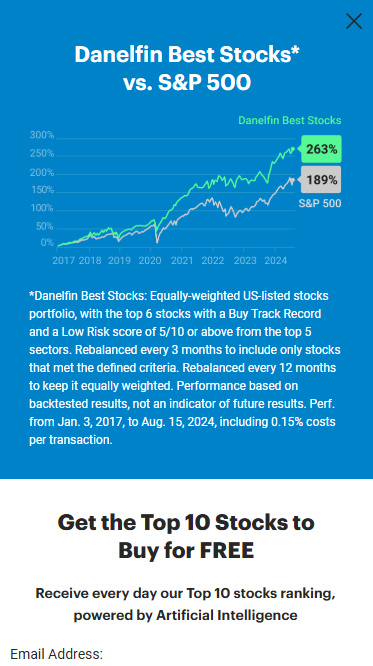Market coverage is an important aspect to consider when looking at AI platform for predicting or analyzing stocks which determines the range and depth of markets and assets which you have access to. A platform with extensive market coverage can allow you to diversify your portfolios and explore opportunities for global trading, and adjust to different strategies. Here are 10 best suggestions to help you analyze the market coverage offered by these platforms.
1. Evaluate Supported Asset Classes
Stocks: Ensure that the platform includes stocks from all major stock exchanges, which include NYSE, NASDAQ and LSE.
ETFs - See if your platform supports an extensive range of ETFs offering exposure in many various sectors, regions, or themes.
Futures and options. Check to see whether your platform has derivatives, such as options, futures or other instruments leveraged.
Commodities and Forex. Determine whether the platform has forex pairs, precious and base metals, energy products and agricultural goods.
Cryptocurrencies Make sure the platform is compatible with popular copyright such as Bitcoin, Ethereum, and altcoins.
2. Check the Geographic Coverage
Global markets: The platform should be able to cover the major global markets, including North America and Europe, Asia-Pacific and emerging markets.
Regional focus Verify that the platform is specialized in certain markets or regions that are in line with your interest in trading.
Local exchanges: Make sure you know whether the platform is compatible with local or regional exchanges relevant to your location or strategy.
3. Take a look at comparing real-time data delayed data Delayed Data
Real-time data is essential for quick decision making, particularly in active trading.
Data delayed: Find out if you can get delayed data for free, or at a discounted cost. This may be enough for investors who are looking to invest long-term.
Data latency: Check if the platform minimizes latency for data, particularly in high-frequency trading.
4. Evaluation of Historical Data
The depth of historical data: Make sure the platform provides extensive historical data to backtest analysis, testing and analysis (e.g. 10+ years).
Check the granularity of historical data.
Corporate actions - Check the historical records to make sure it covers stock splits, dividends as well as other corporate activities.
5. Verify the market depth and order book data
Level 2 data: Make sure that the platform offers Level 2 information (order book depth) for better price exploration and execution.
Verify the bid-ask ranges in order to ensure accurate pricing.
Volume data: Check if your platform has comprehensive volume data that can be used to study market activity and liquidity.
6. Assess Coverage to determine Indices and Sectors
Major indices: Ensure that your platform can support major indices, such as the S&P 500 (e.g. NASDAQ 100 or FTSE 100), for index-based benchmarking.
Sector-specific data: Check if the platform provides data for specific sectors (e.g. technology or healthcare, energy,) for targeted analysis.
Custom indices. Make sure the platform can track or create custom indices that satisfy your needs.
7. Assess the Integration of Sentiment and News Data
News feeds - Ensure the platform is integrating live news feeds with news that are market-moving from reliable (e.g. Bloomberg or Reuters) sources.
Sentiment Analysis: Find out if the platform offers sentiment analysis tools that are based on news, social media, or other data sources.
Events-driven Strategies: Determine if the platform can support strategies that are driven by events (e.g. economic reports, earnings announcements).
8. Check for Multi-Market Trading Ability
Cross-market trade: Make sure the platform permits trading across markets and asset categories using a common interface.
Currency conversion: Verify that the platform supports multicurrency accounts and currency conversions for international trading.
Support for time zones: Find out that your platform supports the ability to trade across multiple time zones.
9. Review the coverage of different data sources
Alternative data: Determine whether the platform incorporates alternative sources of data (e.g. satellite imagery or credit card transactions) to gain unique insights.
ESG data. Check if the platform is stocked with environmental, socio-economic, and governance information for socially responsible investing.
Macroeconomic Data: Check that the platform includes macroeconomic indicators like GDP, inflation and interest rates.
Review Market Reputation and User Reviews
User feedback is a fantastic method to assess the market coverage of a platform.
Verify the credibility of the platform in relation to its coverage or industry awards.
Seek out testimonials that show the platform's efficiency in specific assets and markets.
Bonus Tips:
Trial period for free: Check the coverage in the marketplace of the platform as well as the quality of its data with either a trial or demo.
API access: Verify that the API of the platform permits you to access programmatically market data for custom analysis.
Customer Support: Make sure that the platform is able provide support for any issues related to data or market issues.
With these suggestions to evaluate the market coverage of AI platform for predicting and analyzing stocks and ensure that you select the one that gives you access to the markets and data that you require to be successful in trading. Comprehensive market coverage enables you to diversify your portfolio, look for new opportunities and be able to adapt to market conditions that change. Check out the most popular market ai tips for website examples including trading ai, AI stock, best ai trading app, AI stock, ai trading tools, ai for stock trading, ai for investment, AI stock, ai for investment, best ai for trading and more.

Top 10 Tips To Evaluate The Educational Resources Of AI stock Analysing Trading Platforms And Forecasting Their Future
The users must review the educational material provided by AI stock prediction and trading platforms to fully understand the platform and the way it operates and to make informed trading choices. Here are ten top tips for evaluating these resources.
1. Complete Tutorials and Guides
Tip: Make sure the platform includes tutorials as well as user guides that are targeted at beginners and advanced users.
The reason: Users can navigate the platform more easily with clear directions.
2. Webinars Video Demos and Webinars
Find webinars, videos, demonstrations, or live training sessions.
Why Visual and Interactive content can help you understand complex concepts.
3. Glossary
Tip. Make sure your platform has a glossary that defines key AI- and financial terms.
The reason: This will help all users, but especially novices to the platform learn the terms.
4. Case Studies and Real-World Examples
Tip - Check to see whether the AI platform offers cases studies or real-world examples of AI models.
The reason: Examples of the functionality of the platform as well as its applications are made available to aid users in understanding the platform's features and capabilities.
5. Interactive Learning Tools
Explore interactive tools such as questions, sandboxes, simulators.
What's the reason? Interactive tools allow users to test and improve their knowledge without risking money.
6. Content is regularly updated
Tips: Check to see if the educational materials are regularly updated to incorporate new features, market trends or changes to the regulations.
Why: Outdated data can lead to misinterpretations or incorrect usage of the platform.
7. Community Forums, Support and Assistance
Find active forums for community members and support groups, where you can ask questions to other members or share ideas.
Why? Peer support, expert advice and assistance from peers can boost learning.
8. Programs that offer accreditation or certification
Tip: Check if the platform provides accreditation programs or certification courses.
Why: Recognition for formal education may increase its credibility and motivate users.
9. Accessibility and User-Friendliness
Tips: Evaluate how the accessibility and ease of use of educational resources are.
The reason: Users can learn at their pace and convenience.
10. Feedback Mechanism for Educational Content
TIP: Make sure the platform allows users to submit feedback on educational materials.
Why: User Feedback helps improve the relevance and the quality of the resources.
Learn through a range of formats
Make sure the platform has various formats for learning that will suit your different learning styles (e.g. audio, text videos, text).
By thoroughly assessing these aspects it is possible to determine if the AI stock prediction and trading platform provides robust educational resources to help you realize the potential of it and make educated trading choices. Take a look at the recommended sources tell me for stock trading ai for blog advice including invest ai, free ai tool for stock market india, AI stock analysis, best ai for stock trading, ai in stock market, AI stock analysis, stocks ai, trading ai tool, AI stock prediction, ai trading tool and more.
